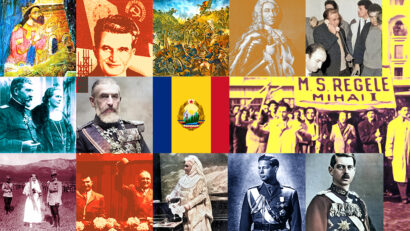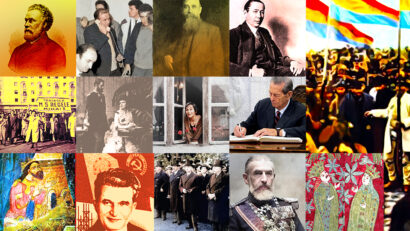Generational differences and modernisation in the 19th Century
In the first half of the 19th Century, two generations of Romanians were striving to modernise the country

Steliu Lambru, 08.02.2021, 13:00
The concept of modernisation emerged in a rather vague form in the Romanian society after the 1770s, in requests addressed by the local nobility to Russia and Austria, followed by a first implementation in 1822. That year, in the wake of the revolution led by Tudor Vladimirescu, the Ottoman Empire replaced the Greek rulers of the Romanian provinces with leaders from among the locals. It was a first victory, and others were soon to follow.
In the first half of the 19th Century, up until 1859 when Moldavia and Wallachia united to form Romania, two generations of Romanians strived to modernise the country. It was the 1820s generation, which opened the door to reforms, and the 1840 generation, which initiated the 1848 Revolution.
The 1820 generation was one formed in the spirit of Oriental culture, with Ottoman culture as the prevailing model. They learned of the reforming ideas circulating in the West via various travellers. The 1840s generation was made up of the children of local nobility, who studied in France, Germany and Italy and had direct, unmediated contact with Western modernity. Once back home, these young men designed a radical transformation programme for the Romanian Principalities.
Experts in the Romanian 19th Century have read the profound changes occurring in that period as a reflection of the differences between the two generations. They went even further to notice rifts between the young and the elderly. Historian Alin Ciupală with the Bucharest University is one of the experts who embrace this viewpoint. Ciupală believes that after Tudor Vladimirescus 1821 riots and the removal of the Greek rulers of the Romanian Principalities, we can speak about the dawn of a political class in the Romanian territories.
Alin Ciupală: “After reverting to local rulers in 1822, the greater Romanian nobility is actually divided into several factions. We have a group of boyars loyal to Russia and its policy in the Romanian principalities and the Balkan region. Then we have a group loyal to the Ottoman Empire and its interests in the same region. And, particularly after 1840, a new generation emerged, made up of higher or lower-rank noblemen, generally young people having studied in the West, who came up with a new idea, a new political project tied to the 1848 Revolution, to the union of the principalities, to the modernisation of the Romanian society.
The emergence of the Romanian political class was the outcome of the fight of both generations for freedom of expression and the abolition of censorship. But it also came with a separation among those who were engaged in politics, and more often than not this differentiation was operated along the lines of membership to a particular generation. Equally important, there was a delineation by sex, with women being a lot more open to change than men.
Alin Ciupală: “During this mid-19th Century period we can basically talk about two divisions, two rifts. On the one hand, there is a division between spouses, at couple level, between men and women. Most of the times, men were still attached to an Eastern-style cultural model, whereas women were more courageous and they took the step towards modernity sooner and more resolutely. They leaned towards the Western cultural model. And a second rift, which is very clear with the emergence of the 1848 generation, is that between children and parents. The youth, the new generation, who went to university in France and Germany, came back home with new ideas, with the desire to change things.
An apparently minor element that played a great role in the separation between the values embraced by the youth and those fostered by the elderly, was fashion, something that many view as trivial. The clothing, footwear, jewels, adding to the taste in music, literature and socialising, have had an essential contribution to changing the Romanians mind-set. Visual sources clearly indicate this strong generational difference. The paintings dating back to that age that feature boyars and their wives depict almost opposite worlds. The husbands are dressed in Oriental outfits, in stark contrast with the wives, who are wearing clothes tailored in keeping with the latest trends in Paris. Alin Ciupală gave us the example of a public monument in Bucharest to substantiate this claim:
Alin Ciupală: “There is a very beautiful monument in Bucharest, unfortunately we no longer pay any attention to it: a statue group featuring the Golescu family, near the North Train Station. We have the father, Dinicu Golescu, wearing an Oriental outfit, the kind the Greek rulers introduced in the Principalities in the early 18th Century. Dinicu Golescu is accompanied by his 4 sons, future 1848 revolutionaries, all of them dressed in keeping with the Western fashion, the “German style as it was called at the time. This monument is an illustration of the division I was talking about, and ultimately of the transformation undergone by the Moldavian and Wallachian society in the first half of the 19th Century.
More than 160 years ago, modern Romania was being created. Toiling for this goal were two generations of Romanians, which, although very different in many respects, pursued the same goal: modernisation. (tr. A.M. Popescu)





























